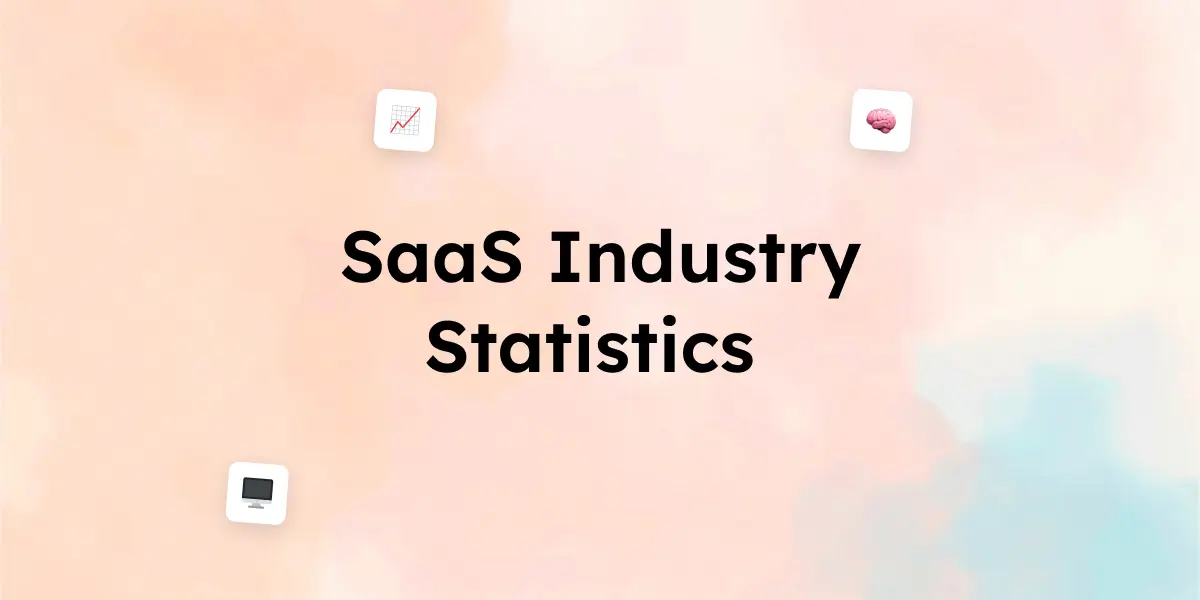The SaaS (Software as a Service) industry continues to dominate the digital economy, with rapid growth, evolving customer expectations, and technological advancements shaping the landscape. As we move into 2025, understanding the latest trends and key metrics is essential for SaaS businesses to stay competitive.
This blog compiles 30 essential statistics covering market trends, customer adoption, revenue growth, and emerging technologies—offering valuable insights for SaaS entrepreneurs, investors, and executives.
Got it! Here’s a detailed blog on “30 SaaS Industry Statistics That Matter in 2025”, tailored for SaaS businesses.
30 SaaS Industry Statistics
1. Market Growth & Revenue Trends
The SaaS industry shows no signs of slowing down, with significant market expansion and revenue increases:
- The global SaaS market is projected to reach $374 billion by 2025, growing at a CAGR of 11.7% from 2022 .
- North America dominates the SaaS market, accounting for over 50% of global revenue .
- The average revenue per SaaS company is expected to rise by 18% year-over-year due to increased enterprise adoption.
- Over 85% of businesses will use cloud-based SaaS solutions by the end of 2025.
- AI-powered SaaS solutions will drive 35% of new revenue streams in the industry.
2. Customer Adoption & Retention
SaaS businesses thrive on strong customer relationships and retention strategies:
- The average customer churn rate in SaaS is between 4-7% annually, but best-in-class companies maintain less than 3% churn.
- 94% of enterprises say they plan to expand their SaaS usage in 2025.
- The freemium model remains a strong acquisition strategy, with 45% of SaaS companies offering free trials.
- The average customer lifetime value (CLV) to customer acquisition cost (CAC) ratio is 3:1, meaning for every dollar spent acquiring a customer, businesses expect to earn three.
- 70% of SaaS businesses use personalized onboarding experiences to reduce churn and increase engagement.
3. SaaS Pricing & Revenue Models
Pricing strategies are crucial for growth and sustainability:
- 60% of SaaS companies are shifting to usage-based pricing instead of flat-rate subscriptions
- The average SaaS contract value has increased by 15% since 2023, indicating stronger enterprise demand .
- 75% of SaaS companies now offer flexible pricing tiers to cater to SMBs and enterprises.
- 83% of SaaS businesses report that offering annual billing improves cash flow and retention rates
- Businesses using AI-driven dynamic pricing see an average 12% increase in revenue.
4. Emerging Technologies in SaaS
AI, automation, and security advancements are reshaping SaaS offerings:
- 47% of SaaS companies are integrating AI for enhanced analytics, customer support, and automation.
- The adoption of low-code/no-code SaaS platforms is expected to grow by 40% in 2025.
- Cybersecurity investments in SaaS have increased by 32% year-over-year, driven by rising security threats.
- Multi-cloud SaaS strategies are used by 65% of enterprises to improve resilience and avoid vendor lock-in.
- Hyper-personalization powered by AI will be a key feature in 50% of SaaS applications by the end of 2025 .
5. SaaS Marketing & Sales Performance
Marketing strategies continue to evolve for SaaS businesses:
- The average customer acquisition cost (CAC) for SaaS is $205 per customer, though enterprise SaaS CAC can exceed $1,000.
- SEO and content marketing generate the highest ROI, with 61% of SaaS companies relying on organic traffic for lead generation.
- LinkedIn Ads drive 2x more conversions for B2B SaaS than other social platforms.
- 68% of SaaS sales involve multiple stakeholders, increasing sales cycles to an average of 84 days .
- Businesses that implement account-based marketing (ABM) see a 34% increase in deal sizes .
6. Future Outlook & Industry Predictions
The next phase of SaaS growth will be shaped by these trends:
- Vertical SaaS (industry-specific SaaS solutions) will grow by 28% CAGR, outpacing horizontal SaaS .
- By 2026, over 90% of new SaaS startups will integrate AI features from day one.
- Decentralized SaaS (dSaaS), built on blockchain, is projected to gain traction, with 20% of new SaaS companies experimenting in this space.
- Companies that leverage AI-powered customer insights will increase user engagement by 40% .
- SaaS IPOs are expected to rebound in 2025, with a 15% increase in public listings.
Conclusion
The SaaS industry in 2025 is defined by growth, AI integration, customer retention, and evolving pricing models. Businesses that adapt to usage-based pricing, AI-powered personalization, and multi-cloud strategies will thrive in this competitive space.
For SaaS businesses, staying ahead means leveraging these insights to refine strategies, optimize revenue models, and embrace the latest technologies. Whether you’re an entrepreneur, investor, or SaaS executive, these trends offer a roadmap to sustainable growth in 2025 and beyond.
Want to stay updated on SaaS trends? Subscribe to our newsletter for the latest industry insights!
FAQs
1. What is the projected growth of the SaaS market in 2025?
The global SaaS market is expected to reach $374 billion by 2025, growing at a CAGR of 11.7% from 2022. North America remains the dominant region, accounting for over 50% of global revenue.
2. What are the key SaaS trends shaping 2025?
Some of the biggest SaaS trends in 2025 include:
AI-driven automation: Nearly 47% of SaaS companies are integrating AI.
Usage-based pricing: 60% of SaaS businesses are shifting to pay-as-you-go models.
Multi-cloud adoption: 65% of enterprises use multi-cloud strategies to improve resilience.
Vertical SaaS growth: 28% CAGR for industry-specific SaaS solutions.
3. What is the average churn rate in SaaS?
The average churn rate in SaaS is 4-7% annually, but top-performing companies keep it below 3%. A strong onboarding process and customer engagement strategies help reduce churn.



